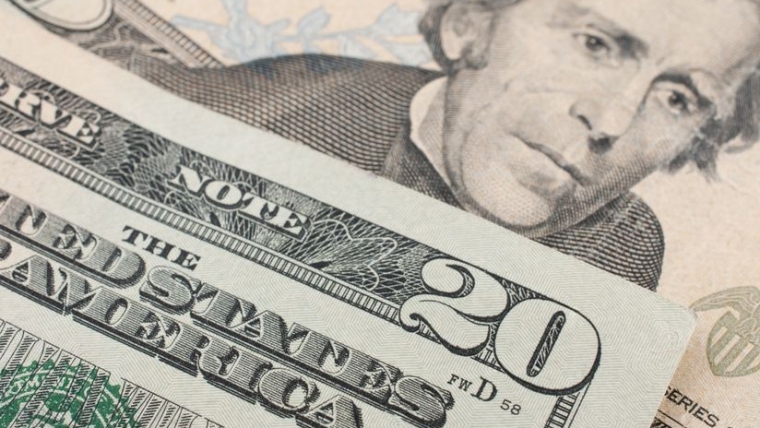
There has been little newsflow to get in the way of further recovery in global equity markets. The next focus for investors is the Fed’s Jackson Hole symposium at the end of the week. The Treasuries curve has flattened slightly, with the 10-year rate down to 3.86%. The USD is broadly weaker, with the NZD showing a steady climb up through 0.61.
It has been a typically quiet start to the week regarding newsflow. The economic calendar for the US is light and the next key risk event is Fed Chair Powell’s keynote speech at the Jackson Hole symposium, Friday night, NZ time. He is expected to support the case for a Fed rate cut at the next meeting in September, but the dataflow will determine the pace of easier monetary policy through the cycle.
Two media interviews by FOMC members gave a green light for the Fed to cut rates next month, albeit with no signal of urgency that a larger 50bps cut is required. Speaking to the WSJ overnight, Minneapolis Fed President Kashkari said, “The balance of risks has shifted, so the debate about potentially cutting rates in September is an appropriate one to have”. He previously thought a rate cut might not be warranted until the end of the year. While he noted the labour market was showing “some concerning signs”, he was looking for a “measured approach” to cutting rates because layoffs are low and claims for unemployment benefits don’t suggest a notable deterioration.
San Francisco Fed President Daly told the FT that recent inflation figures had given her “more confidence that we are on our way to price stability” so it is time to consider rate cuts. She added that the economy was “not in an urgent place” and argued for gradualism in the Fed’s approach to easier monetary policy.
Given the recent recovery in risk appetite and sharp reversal in financial conditions, the market continues to pare the chance of a 50bps cut next month, with Fed pricing for the next meeting down to “only” 31bps. The 2-year Treasury rate is up slightly on the day, while the 10-year rate has nudged down a couple of basis points to 3.86%, resulting in a mild flattening of the curve.
The US S&P500 is up for an eighth consecutive day, currently up over ½% and broadly based gains with all sectors contributing. The 9% recovery from its early August low sees the index within 1½% from July’s all-time high. European equities also continue to recover, with the Euro Stoxx 600 index closing up 0.6%.
There has been some notable price action in the currency market, with higher risk appetite seeing broadly-based USD weakness but also JPY showing a further solid gain. USD/JPY fell as much as 1.7% from last week’s close to 145.20 before recovering and is currently down 0.7% at 146.60. Divergent views on where the yen might head from here and nerves ahead of BoJ Governor’s special session at Parliament on Friday to discuss the July rate hike are factors in the yen’s ongoing volatility.
Against a backdrop of higher risk appetite, commodity currencies have outperformed with the AUD and NZD up 0.9% from last week’s close, to 0.6730 and up through 0.61 respectively, with NZD/AUD steady around 0.9075. The NZD has regained a 0.47 handle while NZD/EUR is back to 0.55. NZD strength is a reminder that global forces are much more important for the currency than domestic factors such as the RBNZ’s rate cut cycle, something we have been stressing for some time.
Oil prices are down 2½%, seeing Brent crude trade down to a USD77 handle, with traders noting weaker demand from China and the prospect of OPEC increasing supply outweighing concerns about tensions in the Middle East.
In the domestic rates market, NZ rates pushed higher, with payside interest in the swaps market following the recent tumble in rates. The 2-year and 10-year swap rates both rose 6bps to 3.83% and 3.91% respectively. Adding to NZ market underperformance, NZDM launched the syndication of a new May 2036 nominal bond. NZDM expects to issue at least $3b and the transaction will be capped at $6b. Bond cheapening relative to swaps since the start of July – 10-year asset swap spreads are towards the top end of the 10-30 bps range from the past 6 months and near multi-year highs – can be expected to support demand. In an afternoon update, the orderbook showed $13.5b of bids and price guidance was narrowed to a spread of 8-10bps over the 2035 bond.
In domestic economic news, NZ’s performance of services index rose 3.9pts from a rock-bottom level to 44.6 in July, still a dreadful result even if not as bad as May/June. Of note the indicator is still below GFC levels. The PMI/PSI composite indicatively points to a further contraction in GDP in Q3, following the expected contraction in Q2. NZ’s economic recession continues unabated.
In the day ahead REINZ housing market and trade data will be released. The RBA meeting minutes aren’t expected to reveal anything new, while tonight sees the release of Canadian CPI inflation data.

We welcome your comments below. If you are not already registered, please register to comment
Remember we welcome robust, respectful and insightful debate. We don't welcome abusive or defamatory comments and will de-register those repeatedly making such comments. Our current comment policy is here.